The Unexpected Enlightenment of Rachel Griffin – L. Jagi Lamplighter
Review by Christopher G. Nuttall
One of the problems in writing a magic boarding school series these days is the overpowering shadow of Harry Potter. Very few of the tropes JK Rowling used are actually unique to her, yet they are so closely associated in the reading mind with Harry Potter that it can be quite hard for another book to develop its own identity. Even The Worst Witch, which predates Harry Potter by over twenty years, is sometimes accused of ripping off Rowling. On the surface, there are a great many similarities – some more apparent than real – between The Unexpected Enlightenment of Rachel Griffin and Harry Potter. However, below the surface, there are many differences and, as the series moves along, it rapidly develops its own identity.
The stories are set in a world that, on the face of it, is very much like Harry Potter. A secret magical society – the Wise – co-exists with us, the Unwary. There are very few contacts between the two worlds, as the Wise use their magic to keep themselves hidden. However, as the story unfolds, it becomes clear that the world of the Wise is merely the tip of the iceberg and that powerful (unseen) forces are shaping and manipulating reality for their own purposes. Lamplighter deserves particular credit for making her world large right from the start, something that often bedevilled Harry Potter. (Harry spent most of his time at Hogwarts or staying with his Aunt and Uncle). There is a very definite sense of a world-spanning society right from the start.
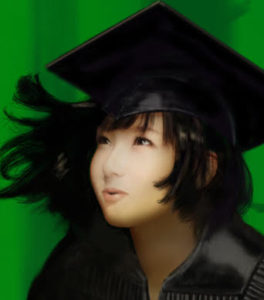 Rachel Griffin, the thirteen-year-old youngest daughter of a powerful (and English) magical family, has been sent to Roanoke Academy for the Sorcerous Arts. Like most of her classmates, Rachel has a specific gift as well as her magic; she simply never forgets anything. She can glance at a book and recall its contents years later. And, as it happens, her gift also makes her effective immune to memory spells. She can look back at any moment and see what really happened. Desperate to fit in, Rachel befriends Sigfried Smith and Nastasia Romanov, Princess of Magical Australia. She also meets two older boys from a different hall who appear, on the face of it, to be slightly sinister.
Rachel Griffin, the thirteen-year-old youngest daughter of a powerful (and English) magical family, has been sent to Roanoke Academy for the Sorcerous Arts. Like most of her classmates, Rachel has a specific gift as well as her magic; she simply never forgets anything. She can glance at a book and recall its contents years later. And, as it happens, her gift also makes her effective immune to memory spells. She can look back at any moment and see what really happened. Desperate to fit in, Rachel befriends Sigfried Smith and Nastasia Romanov, Princess of Magical Australia. She also meets two older boys from a different hall who appear, on the face of it, to be slightly sinister.
Rachel … has something of a chip on her shoulder. No, that’s not entirely fair, but it is noticeable. As the youngest, she feels as though she has a lot to live up to (not unlike Ron) but also that she’s not taken seriously by anyone. She has a handful of tiny, but niggling resentments; she isn’t specifically invited to the Young Sorcerers League, so she thinks she isn’t invited. (She was actually expected to go.) She also thinks that her choice of hall was made for her before she even arrived at the school. This pushes her towards a different league that might both help and hinder her.
And, as the story progresses, it becomes clear that the school itself is under threat from a dangerous and unknown force.
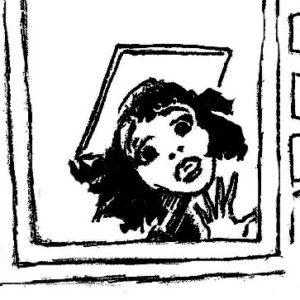 It’s actually difficult to review this book because it has an odd combination of a great deal happening (in a very short timeframe) and, at the same time, very little happening. It does a marvellous job of establishing the key players (and giving us a number of references to other famous works, ranging from Superman to Peter Pan) but it doesn’t even close the opening subplots. It reminds me, in some ways, of John Scalzi’s The Collapsing Empire where no progress at all has been made on solving the key problem by the end of the first book, although The Unexpected Enlightenment of Rachel Griffin is far better at introducing its universe. Luckily, the next three books in the series are already out.
It’s actually difficult to review this book because it has an odd combination of a great deal happening (in a very short timeframe) and, at the same time, very little happening. It does a marvellous job of establishing the key players (and giving us a number of references to other famous works, ranging from Superman to Peter Pan) but it doesn’t even close the opening subplots. It reminds me, in some ways, of John Scalzi’s The Collapsing Empire where no progress at all has been made on solving the key problem by the end of the first book, although The Unexpected Enlightenment of Rachel Griffin is far better at introducing its universe. Luckily, the next three books in the series are already out.
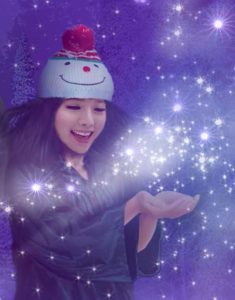 Rachel herself is a very likable character, although she comes across as a little more childish than I prefer. She does, as I noted above, have a tendency to linger on small resentments, which may actually be a case of fridge brilliance as her gift also ensures that she will never forget any slights, let alone anything worse. (She will never forget the joy of her first romance, or the heartbreak of its end.) Some of her worries are very typical for a teenage girl, in that she wishes she looked more like her beautiful elder sister than she does. She seems torn between being ‘good’ and ‘bad,’ at least partly because she wants to impress her friends. There’s also more than a hint of snobbery, in that she is an aristocrat and thinks highly of aristocracy. On the other hand, she certainly doesn’t sneer at ‘commoners.’ And she suffers a number of ‘broken pedestal’ moments as she starts to grow up and realise that life isn’t a storybook.
Rachel herself is a very likable character, although she comes across as a little more childish than I prefer. She does, as I noted above, have a tendency to linger on small resentments, which may actually be a case of fridge brilliance as her gift also ensures that she will never forget any slights, let alone anything worse. (She will never forget the joy of her first romance, or the heartbreak of its end.) Some of her worries are very typical for a teenage girl, in that she wishes she looked more like her beautiful elder sister than she does. She seems torn between being ‘good’ and ‘bad,’ at least partly because she wants to impress her friends. There’s also more than a hint of snobbery, in that she is an aristocrat and thinks highly of aristocracy. On the other hand, she certainly doesn’t sneer at ‘commoners.’ And she suffers a number of ‘broken pedestal’ moments as she starts to grow up and realise that life isn’t a storybook.
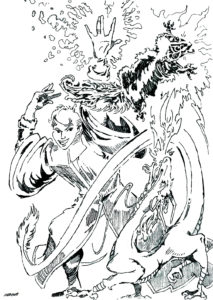 Sigfried Smith is delightfully over the top as a character, reminding me more of Fred and George than Harry Potter. He’s funny, although I suspect I would find him more than a little wearing if I had to spend too much time with him. Nastasia Romanov, by contrast, is cool and reserved, perhaps a reaction to a rather eccentric father. (She also has an obsession that keeping the rules that clashes with her friends’ slightly more flexible morality.) And Gaius and Victor Von Dread (an obvious riff on Doctor Doom) come across as far more competent than most of the teachers, some of which appear be unconcerned about serious threats to the school and everything else (and I do mean everything.) Beyond them, the author draws all sorts of characters who hop in and out of the story.
Sigfried Smith is delightfully over the top as a character, reminding me more of Fred and George than Harry Potter. He’s funny, although I suspect I would find him more than a little wearing if I had to spend too much time with him. Nastasia Romanov, by contrast, is cool and reserved, perhaps a reaction to a rather eccentric father. (She also has an obsession that keeping the rules that clashes with her friends’ slightly more flexible morality.) And Gaius and Victor Von Dread (an obvious riff on Doctor Doom) come across as far more competent than most of the teachers, some of which appear be unconcerned about serious threats to the school and everything else (and I do mean everything.) Beyond them, the author draws all sorts of characters who hop in and out of the story.
It’s that which is both the book’s strongest point and its weakest. On a micro level, there are so many characters (and so much past history) that its sometimes easy to lose track of who is who. (I had to reread just to keep everything straight in my mind.) Lamplighter doesn’t fall into the Rowling trap of having one house (Slytherin) be wholly unpleasant at best, evil at worst. But, on a macro level, the world is so vast, and so historical, that we are lacking a number of crucial details. Rowling’s world is far simpler and makes the story easier to understand. Lamplighter’s threatens to overshadow the story she’s trying to tell.
And yet this is necessary, because – as the story develops – it becomes clear that someone has been manipulating history …
Rachel Griffin is not a newcomer to the world, even if she is a newcomer to the school. Unlike Harry, who is introduced to magic at the same time as the reader, it has been part of her life since birth. That makes it harder for her to tell us stuff we need to know, although the author does try to compensate for this by having her tell Sigfried stuff. It doesn’t work so well, although Sigfried is at least a little more curious than Harry. (One of the things that annoyed me about Harry Potter is that he doesn’t ask many questions.)
Overall, The Unexpected Enlightenment of Rachel Griffin is a fairly mixed bag. (Later books in the series are more focused, as the world-building is already done.) It introduces the world and a vast cast of characters, but takes place in a very short space of time, which makes it hard to understand what is going on. Rachel herself has not yet solidified as a character – which makes sense as she’s going into her teenage years – and she has too many childish moment for my liking. (That said, she’s nowhere near as ridiculously stereotypical as the ‘heroine’ of Bras and Broomsticks.) But she’s likable enough to get us to overlook her flaws until she grows out of them.
Personally, I’d recommend the book for young teenagers of both sexes, perhaps ones who have just graduated from reading Harry Potter. There are definite moments for adults in the book, as the world-building is particularly impressive, but adults may also find that Rachel grates on them a little. But she does grow out of it.
The Unexpected Enlightenment of Rachel Griffin is available in eBook (Kindle Unlimited) and paperback (Amazon). You can also download a handful of sample chapters here.

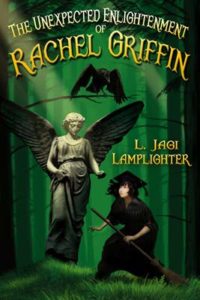
Leave a comment